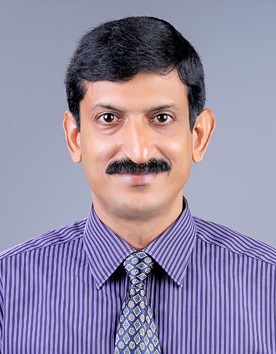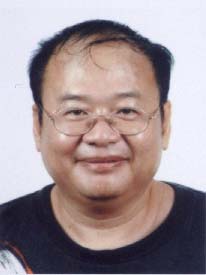Plenary Speakers
 |
| Brain Machine Interface Systems - Translating Thoughts to Actions |
|
Dr. Vinod A Prasad
|
Abstract
Brain-Machine Interfaces are systems that translate the user’s thoughts (intentions) coded by brain activity measures into actions through a control signal without using activity of any muscles or peripheral nerves. These control signals can potentially be employed to substitute motor capabilities (e.g. brain-controlled prosthetics for amputees or patients with spinal cord injuries, brain-controlled wheel chair); to help in the restoration of such functions (e.g. as a tool for stroke rehabilitation), to enable alternative communication (e.g. virtual keyboard, speller etc.) for those who are disabled or otherwise unable to communicate, and other applications such as serious games for enhancing cognition skills. This talk will provide an overview of Brain-Machine Interface (BMI) Systems, research challenges and applications. The talk will also highlight the importance of the awareness of BMI user about his/her performance through neurofeedback mechanism, which helps in self-regulation for performance enhancement.Speaker’s Biography
Dr. Vinod A Prasad is a Professor in Electrical Engineering Department of IIT Palakkad and the Dean of Industry Collaboration & Sponsored Research. He has 24 years of work experience in industry and academics. Prior to joining IIT Palakkad in October 2017, Dr. Vinod has been a tenured Associate Professor in School of Computer Engineering, Nanyang Technological University (NTU), Singapore.Vinod’s research interests include digital signal processing, low power, reconfigurable circuits & systems for wireless communications, Brain-Computer Interface and its applications. He has on-going and completed external research grants from various funding agencies - Ministry of Education, Singapore, Ministry of Defence, Singapore, DSO National Laboratories, Singapore, European Aeronautic Defence & Space Company, Singapore Millennium Foundation, Civil Aviation Authority of Singapore and Airbus Group Innovations amounting over $3 million as principal investigator. He has published over 240 papers in refereed international journals and international conferences. He has supervised and graduated 15 Ph.D. students and 1 Master of Engineering (By Research) student. Currently, he is guiding 5 Ph.D. students and 3 Post-doctoral Fellows. He is an Associate Editor of IEEE Transactions on Human-Machine Systems, and Associate Editor of Springer Journal of Circuits, Systems & Signal Processing, Senior Member of IEEE and Track Co-Chair (Brain-Machine Interface Systems) of IEEE Systems, Man & Cybernetics Society for which he won the award of the ‘Most Active Technical Committee in Human-Machine Systems’ of IEEE Systems, Man and Cybernetics Society in three consecutive years – 2015, 2016 and 2017. Vinod has won the Nanyang Award for Excellence in Teaching 2009, the highest recognition conferred by NTU Singapore to individual faculty for teaching.
 |
| Signal Representation with Non-Linear Networks |
|
Dr. Wen-Liang Hwang
|
Abstract
I consider DNNs with rectified linear units and max-pooling operations from a signal representation perspective. In this view, such representations mark the significant transition from using a single linear representation to utilizing a large collection of affine linear representations tailored to particular regions of the signal space. However, the expression power of a DNN cannot be fully leveraged in signal processing without explicit expressions of the affine linear operators, their domains, ranges, and composition from the weight and bias parameters of the network.I address the problem and provides a precise description of the individual affine linear representations and corresponding domain regions that the neural network associates to each signal of the input space. In particular, we describe weighted atomic decompositions of the representations and, based on estimating their Lipschitz regularity, draw the connection between the sparse or compressible weight distributions and the stability in representation and learning, independent of the network depth. Such an analysis may facilitate understanding DNNs and promote further theoretical insight from both the signal processing and machine learning communities.
Speaker’s Biography
Wen-Liang Hwang received his B.S. Degree in Nuclear Engineering from National Tsing Hua University, Hsinchu, Taiwan; his M.S. Degree in Electrical Engineering from the Poly-technic Institute of New York, New York; and, in 1993, his Ph.D. in Computer Science from New York University, New York. He was a postdoctoral researcher with the Department of Mathematics, University of California, Irvine in 1994. In January 1995, he became a member of the Institute of Information Science, Academia Sinica, Taipei, Taiwan, where he is currently a Research Fellow. He is co-author of the book: "Practical Time-Frequency Analysis," Academic Press, 1998. He is co-author of the ISI high-cited paper in 2008 : "Singularity detection and processing with wavelets". In over 20 years, Dr. Hwang’s research covers wavelets, time-frequency analysis, image and video compression, sparse representation and compressive sensing and applications. His current research interests include analysis of deep neural networks and large-scale numerical optimization.